Shape and Charge of Gold Nanomaterials Influence Survivorship, Oxidative Stress and Moulting of Daphnia magna
Abstract
:1. Introduction
2. Materials and Methods
2.1. Characterization of Functionalized Gold ENMs
2.2. Daphnia magna Culturing
2.3. Assessing Nanoparticle Effects on Survivorship of D. magna
2.4. Assessment of Surface Charge on Gold ENMs
2.5. Effect of ENMs on ROS Formation
2.6. Effect of Exposure of Gold ENMs on Moulting of D. magna
2.7. Confocal Imaging of Localisation and Retention of ENMs in D. magna Gut
2.8. Statistical Analysis
3. Results and Discussion
3.1. Characterization of Gold ENMs
3.2. Effect of Gold ENMs on D. magna Survival
3.3. Effect of Gold ENMs on ROS Production in D. magna
3.4. Effect of Gold ENMs on Moulting of D. magna
4. Conclusions
Supplementary Materials
Acknowledgments
Author Contributions
Conflicts of Interest
References
- Pardeike, J.; Hommoss, A.; Müller, R.H. Lipid nanoparticles (SLN, NLC) in cosmetic and pharmaceutical dermal products. Int. J. Pharm. 2009, 366, 170–184. [Google Scholar] [CrossRef] [PubMed]
- Sung, D.; de la Fuente Vornbrock, A.; Subramanian, V. Scaling and Optimization of Gravure-Printed Silver Nanoparticle Lines for Printed Electronics. IEEE Trans. Compon. Packag. Technol. 2010, 33, 105–114. [Google Scholar] [CrossRef]
- Huang, X.; Jain, P.K.; El-Sayed, I.H.; El-Sayed, M.A. Gold nanoparticles: Interesting optical properties and recent applications in cancer diagnostics and therapy. Nanomedicine 2007, 2, 681–693. [Google Scholar] [CrossRef] [PubMed]
- Kanel, S.R.; Manning, B.; Charlet, L.; Choi, H. Removal of arsenic (III) from groundwater by nanoscale zero-valent iron. Environ. Sci. Technol. 2005, 39, 1291–1298. [Google Scholar] [CrossRef] [PubMed]
- Im, S.H.; Jeong, U.; Xia, Y. Polymer hollow particles with controllable holes in their surfaces. Nat. Mater. 2005, 4, 671–675. [Google Scholar]
- Letfullin, R.R.; Iversen, C.B.; George, T.F. Modeling nanophotothermal therapy: Kinetics of thermal ablation of healthy and cancerous cell organelles and gold nanoparticles. Nanomed.: Nanotechnol. Biol. Med. 2011, 7, 137–145. [Google Scholar] [CrossRef] [PubMed]
- Jain, P.K.; Lee, K.S.; El-Sayed, I.H.; El-Sayed, M.A. Calculated absorption and scattering properties of gold nanoparticles of different size, shape, and composition: Applications in biological imaging and biomedicine. J. Phys. Chem. B 2006, 110, 7238–7248. [Google Scholar] [CrossRef] [PubMed]
- Mahapatra, I.; Sun, T.Y.; Clark, J.R.A.; Dobson, P.J.; Hungerbuehler, K.; Owen, R.; Nowack, B.; Lead, J. Probabilistic modelling of prospective environmental concentrations of gold nanoparticles from medical applications as a basis for risk assessment. J. Nanobiotechnol. 2015, 13. [Google Scholar] [CrossRef] [PubMed]
- Botha, T.L.; Boodhia, K.; Wepener, V. Adsorption, uptake and distribution of gold nanoparticles in Daphnia magna following long term exposure. Aquat. Toxicol. 2016, 170, 104–111. [Google Scholar] [CrossRef] [PubMed]
- Dabrunz, A.; Duester, L.; Prasse, C.; Seitz, F.; Rosenfeldt, R.; Schilde, C.; Schaumann, G.E.; Schulz, R. Biological Surface Coating and Molting Inhibition as Mechanisms of TiO2 Nanoparticle Toxicity in Daphnia magna. PLoS ONE 2011, 6, e20112. [Google Scholar] [CrossRef] [PubMed]
- Bodar, C.; Voogt, P.; Zandee, D. Ecdysteroids in Daphnia magna: Their role in moulting and reproduction and their levels upon exposure to cadmium. Aquat. Toxicol. 1990, 17, 339–350. [Google Scholar] [CrossRef]
- Bozich, J.S.; Lohse, S.E.; Torelli, M.D.; Murphy, C.J.; Hamers, R.J.; Klaper, R.D. Surface chemistry, charge and ligand type impact the toxicity of gold nanoparticles to Daphnia magna. Environ. Sci. Nano 2014, 1, 260–270. [Google Scholar] [CrossRef]
- Becker, D.; Brinkmann, B.F.; Zeis, B.; Paul, R.J. Acute changes in temperature or oxygen availability induce ROS fluctuations in Daphnia magna linked with fluctuations of reduced and oxidized glutathione, catalase activity and gene (haemoglobin) expression. Biol. Cell 2011, 103, 351–363. [Google Scholar] [CrossRef] [PubMed]
- Dominguez, G.A.; Lohse, S.E.; Torelli, M.D.; Murphy, C.J.; Hamers, R.J.; Orr, G.; Klaper, R.D. Effects of charge and surface ligand properties of nanoparticles on oxidative stress and gene expression within the gut of Daphnia magna. Aquat. Toxicol. 2015, 162, 1–9. [Google Scholar] [CrossRef] [PubMed]
- Geffroy, B.; Ladhar, C.; Cambier, S.; Treguer-Delapierre, M.; Brèthes, D.; Bourdineaud, J.P. Impact of dietary gold nanoparticles in zebrafish at very low contamination pressure: The role of size, concentration and exposure time. Nanotoxicology 2012, 6, 144–160. [Google Scholar] [CrossRef] [PubMed]
- Renault, S.; Baudrimont, M.; Mesmer-Dudons, N.; Gonzalez, P.; Mornet, S.; Brisson, A. Impacts of gold nanoparticle exposure on two freshwater species: A phytoplanktonic alga (Scenedesmus subspicatus) and a benthic bivalve (Corbicula fluminea). Gold Bull. 2008, 41, 116–126. [Google Scholar] [CrossRef]
- Baer, K.N.; Goulden, C.E. Evaluation of a high-hardness COMBO medium and frozen algae for Daphnia magna. Ecotox. Environ. Saf. 1998, 39, 201–206. [Google Scholar] [CrossRef] [PubMed]
- Nadler, M.; Mahrholz, T.; Riedel, U.; Schilde, C.; Kwade, A. Preparation of colloidal carbon nanotube dispersions and their characterisation using a disc centrifuge. Carbon 2008, 46, 1384–1392. [Google Scholar] [CrossRef]
- Huk, A.; Izak-Nau, E.; Reidy, B.; Boyles, M.; Duschl, A.; Lynch, I.; Dušinska, M. Is the toxic potential of nanosilver dependent on its size? Part. Fibre Toxicol. 2014, 11, 1. [Google Scholar] [CrossRef] [PubMed]
- Barata, C.; Varo, I.; Navarro, J.C.; Arun, S.; Porte, C. Antioxidant enzyme activities and lipid peroxidation in the freshwater cladoceran Daphnia magna exposed to redox cycling compounds. Comp. Biochem. Physiol. Part C Toxicol. Pharmacol. 2005, 140, 175–186. [Google Scholar] [CrossRef] [PubMed]
- Fulda, S.; Gorman, A.M.; Hori, O.; Samali, A. Cellular stress responses: Cell survival and cell death. Int. J. Cell Biol. 2010, 2010, 214074. [Google Scholar] [CrossRef] [PubMed]
- Coors, A.; Hammers-Wirtz, M.; Ratte, H.T. Adaptation to environmental stress in Daphnia magna simultaneously exposed to a xenobiotic. Chemosphere 2004, 56, 395–404. [Google Scholar] [CrossRef] [PubMed]
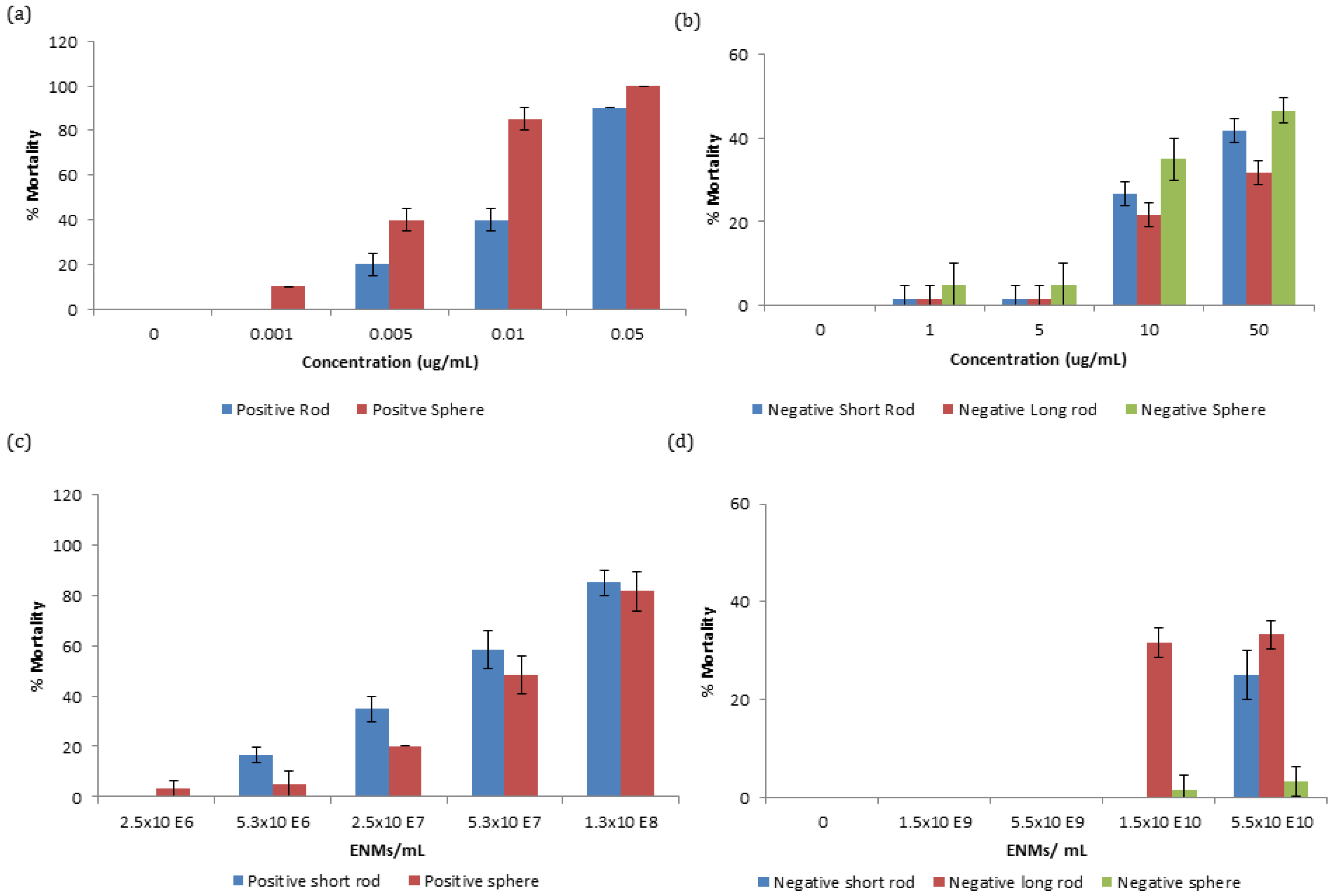
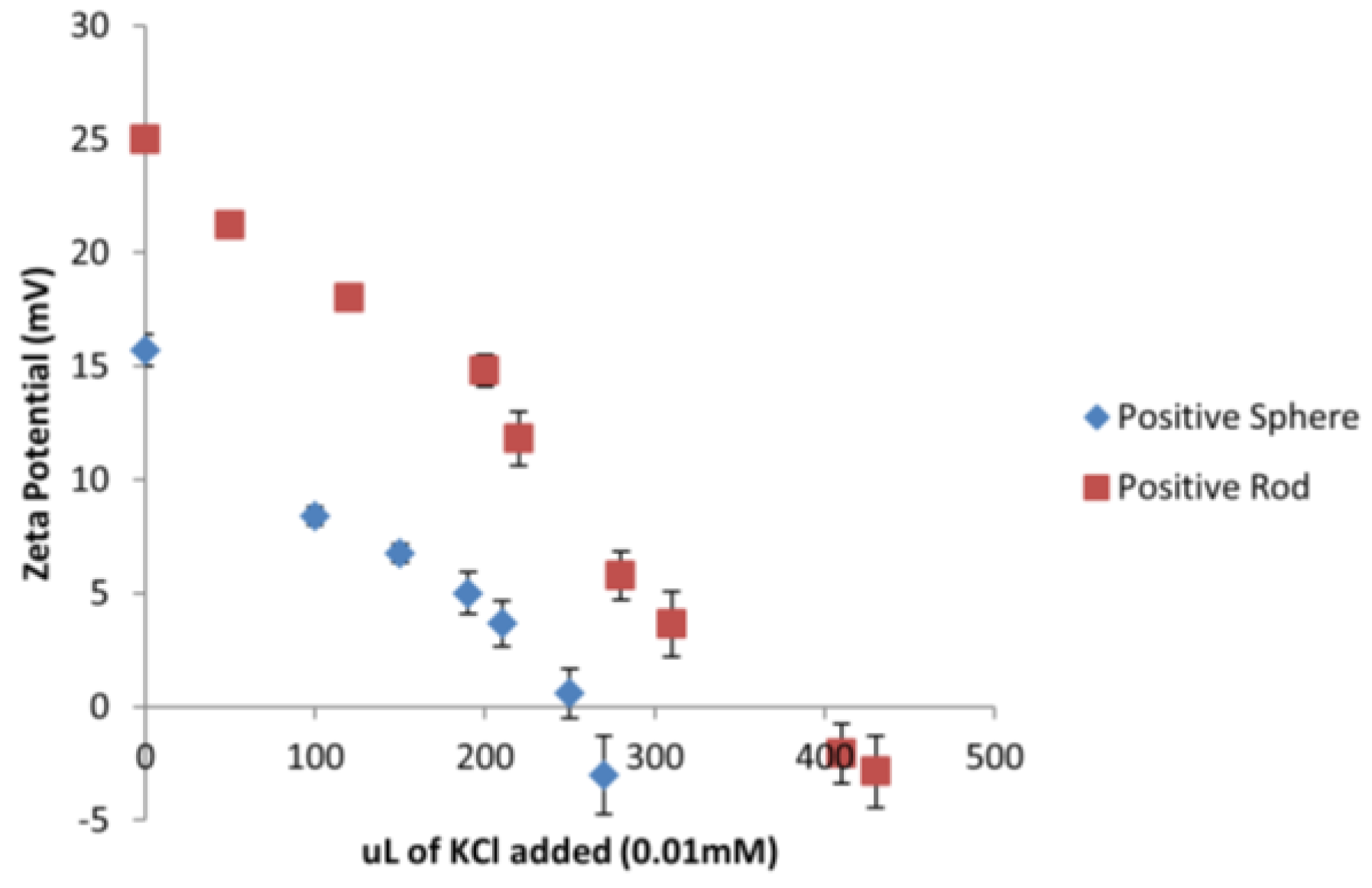
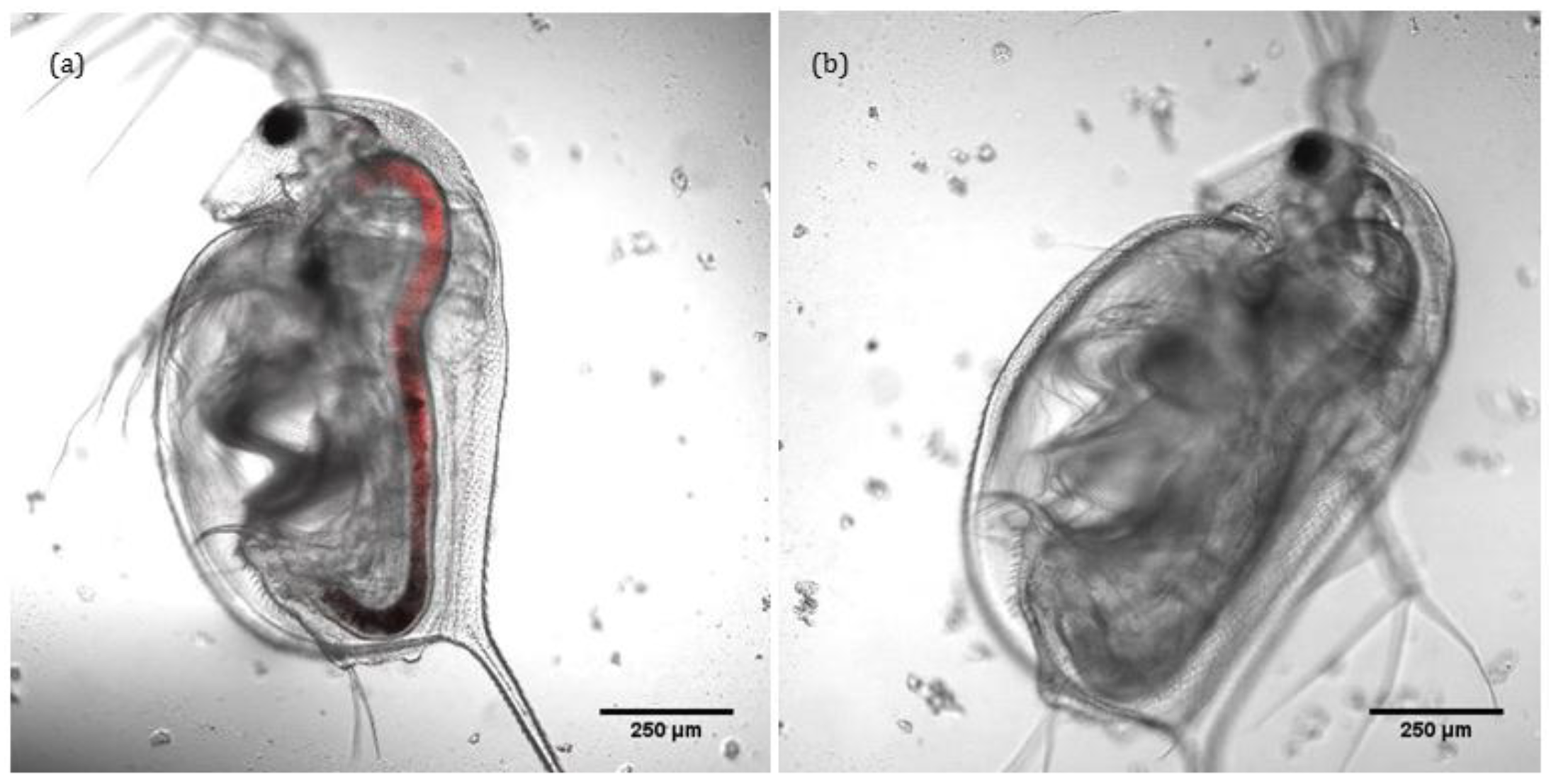
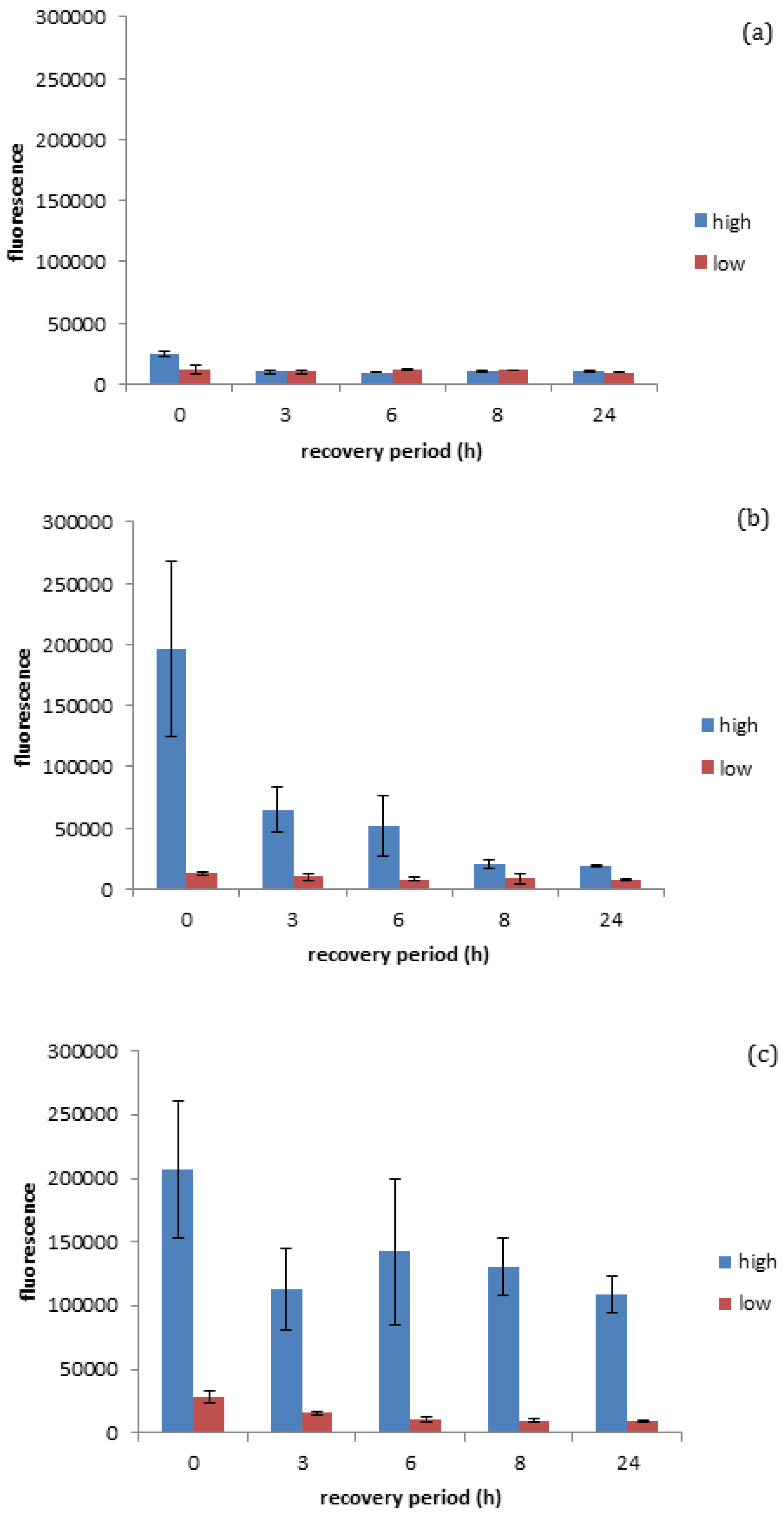
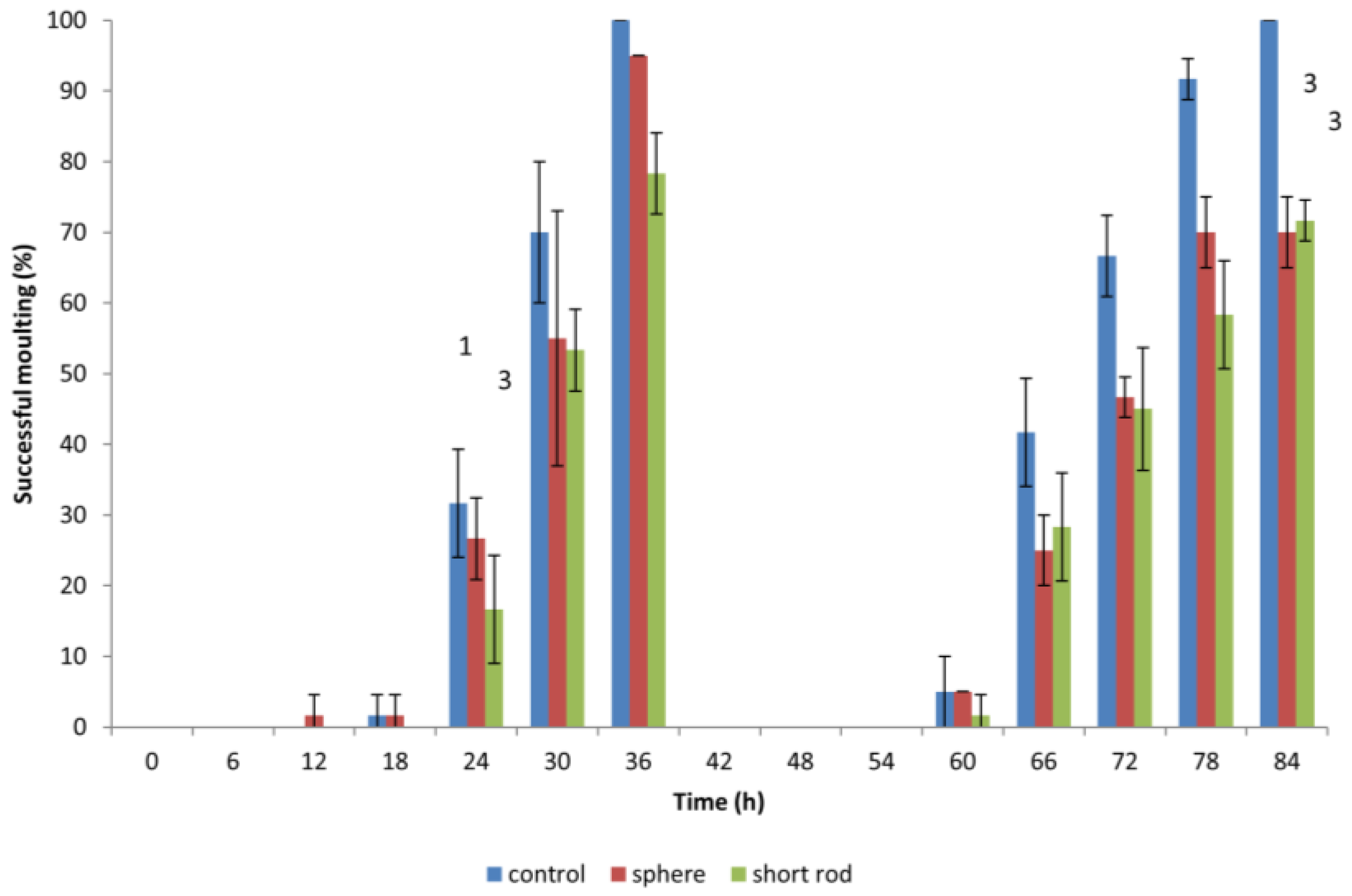
| Sphere | Short Rod | Long Rod | |
|---|---|---|---|
| DLS | 53 (PDI 0.195) | N/A | N/A |
| DCS | 20 | 33 | 33 |
| TEM | 25 | Diameter 25 | Diameter 25 |
| Length 60 | Length 146 | ||
| UV-Vis | 522 | 522 | 520 |
| 660 | 960 |
| Radius (nm) | Length (nm) | Surface Area (nm2) | Volume (nm3) | SA/V Ratio | |
|---|---|---|---|---|---|
| Sphere | 12.5 | - | 1963 | 8181 | 0.239946 |
| Short Rod | 12.5 | 60 | 5694 | 29,452 | 0.193332 |
| Long Rod | 12.5 | 146 | 12,448 | 71,667 | 0.173692 |
© 2016 by the authors; licensee MDPI, Basel, Switzerland. This article is an open access article distributed under the terms and conditions of the Creative Commons Attribution (CC-BY) license (http://creativecommons.org/licenses/by/4.0/).
Share and Cite
Nasser, F.; Davis, A.; Valsami-Jones, E.; Lynch, I. Shape and Charge of Gold Nanomaterials Influence Survivorship, Oxidative Stress and Moulting of Daphnia magna. Nanomaterials 2016, 6, 222. https://doi.org/10.3390/nano6120222
Nasser F, Davis A, Valsami-Jones E, Lynch I. Shape and Charge of Gold Nanomaterials Influence Survivorship, Oxidative Stress and Moulting of Daphnia magna. Nanomaterials. 2016; 6(12):222. https://doi.org/10.3390/nano6120222
Chicago/Turabian StyleNasser, Fatima, Adam Davis, Eugenia Valsami-Jones, and Iseult Lynch. 2016. "Shape and Charge of Gold Nanomaterials Influence Survivorship, Oxidative Stress and Moulting of Daphnia magna" Nanomaterials 6, no. 12: 222. https://doi.org/10.3390/nano6120222
APA StyleNasser, F., Davis, A., Valsami-Jones, E., & Lynch, I. (2016). Shape and Charge of Gold Nanomaterials Influence Survivorship, Oxidative Stress and Moulting of Daphnia magna. Nanomaterials, 6(12), 222. https://doi.org/10.3390/nano6120222








